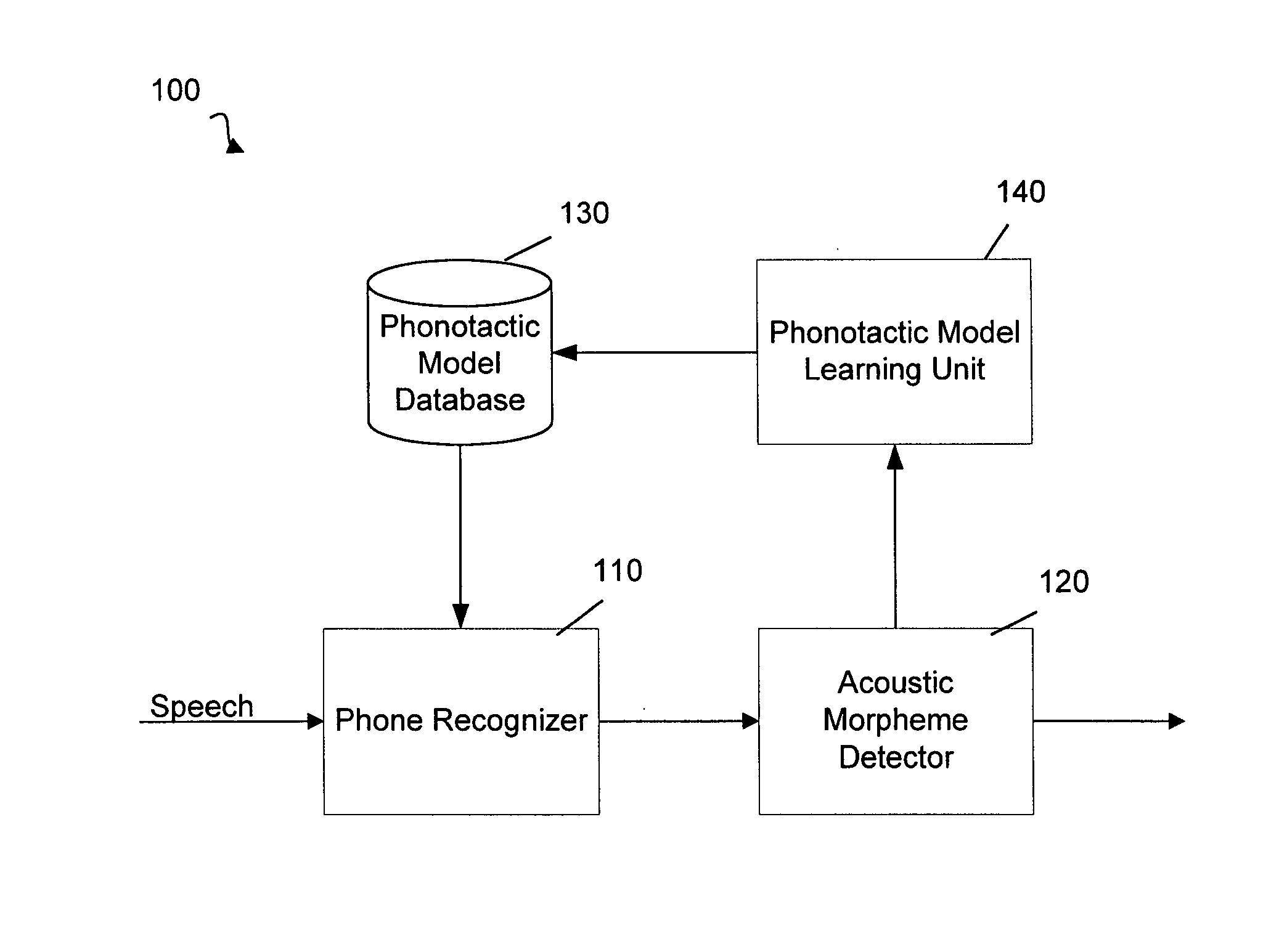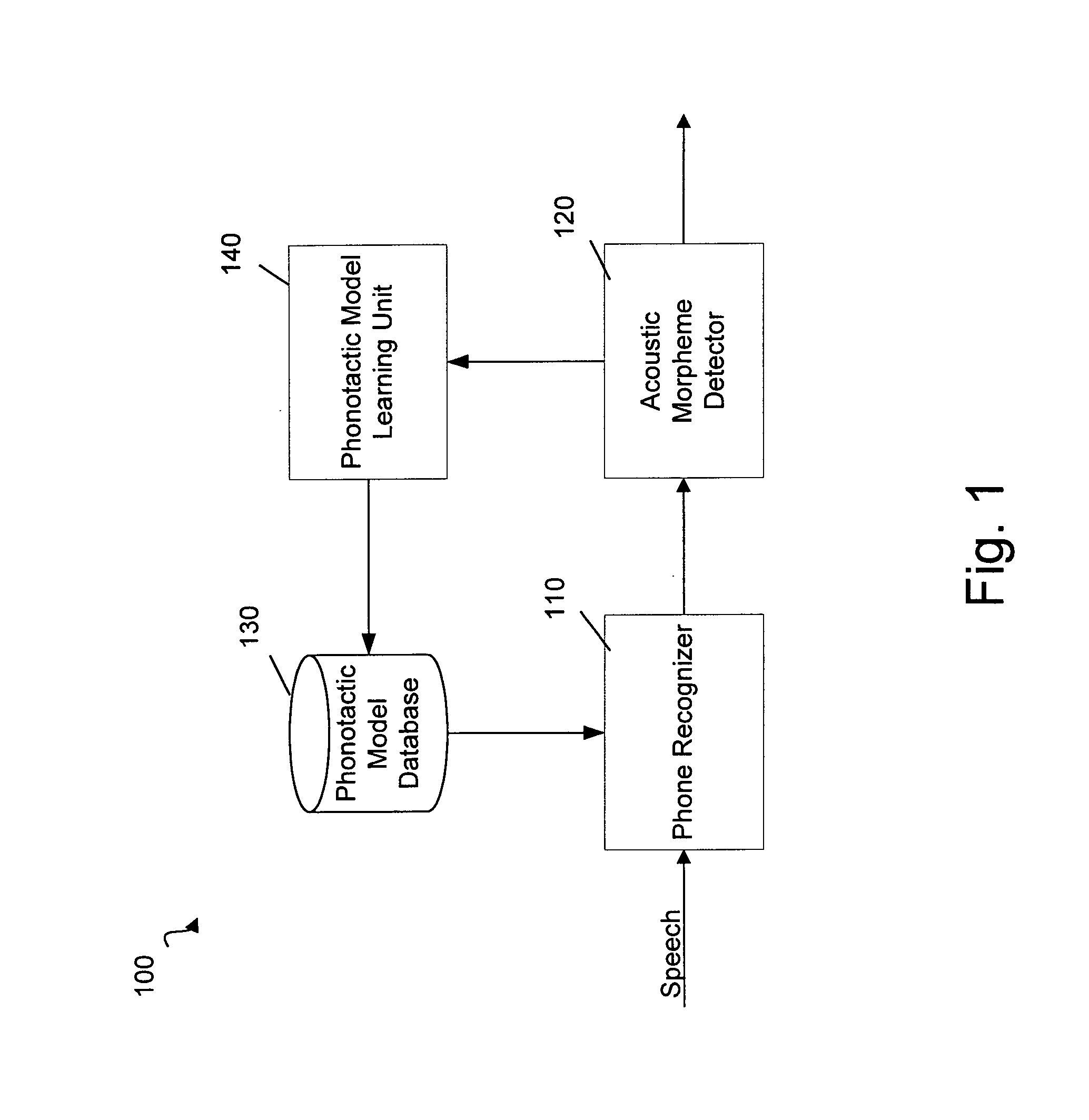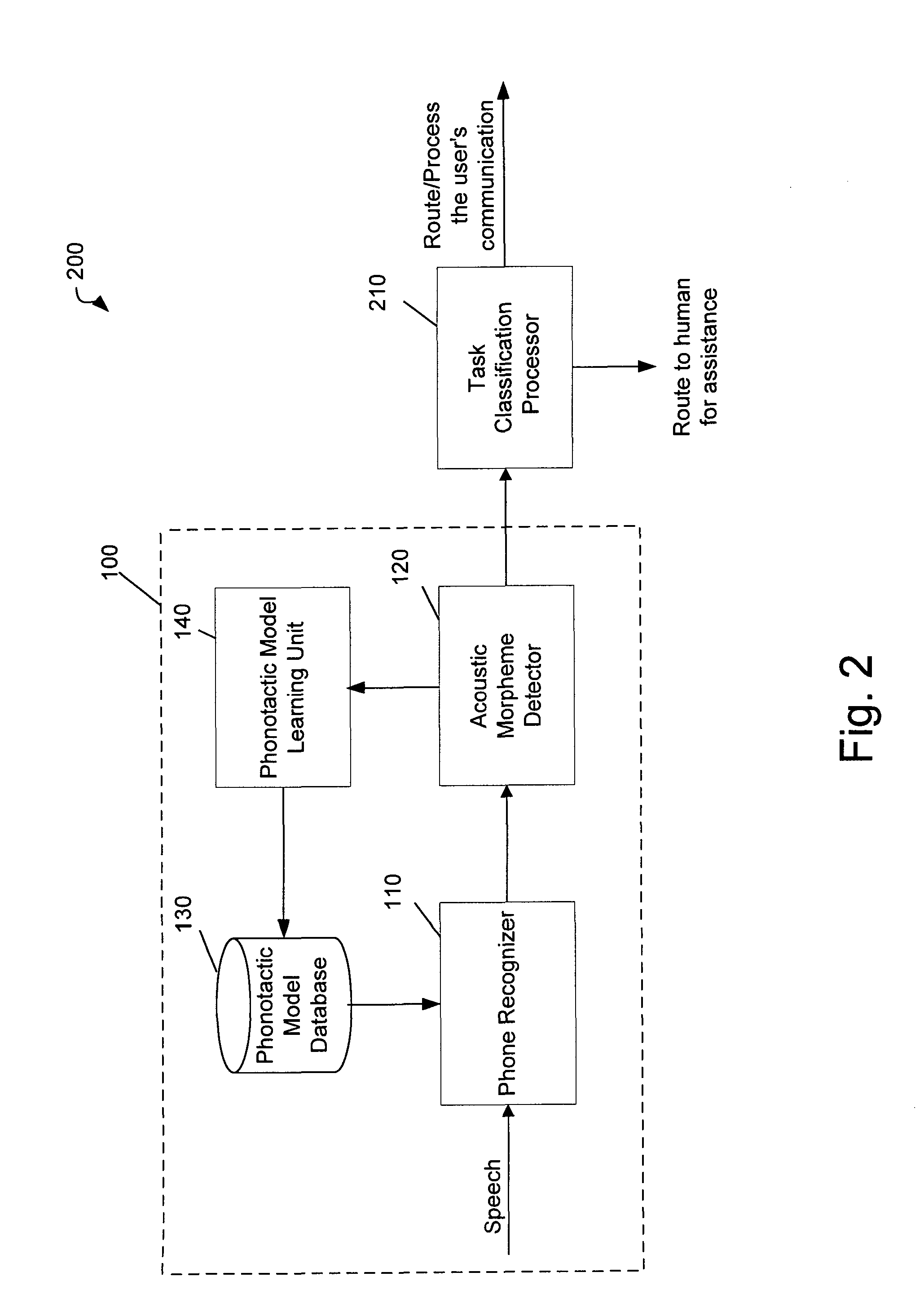Method and System for Automatically Detecting Morphemes in a Task Classification System Using Lattices
a task classification and automatic detection technology, applied in the field of automatic systems for communication recognition and understanding, can solve the problems of time-consuming and prohibitively expensive process, major bottleneck in new application development and refinement of existing ones, and the transcription and labeling process is a major bottleneck
- Summary
- Abstract
- Description
- Claims
- Application Information
AI Technical Summary
Benefits of technology
Problems solved by technology
Method used
Image
Examples
Embodiment Construction
[0015]Traditional ASR techniques require the domain-specific knowledge of acoustic, lexicon data and more importantly the word probability distributions. However, this invention concerns a method for unsupervised learning of acoustic and lexical units from out-of-domain speech data. The new lexical units are used for fast adaptation of language model probabilities to a new domain. Starting from a lexicon and language model the relevant language statistics of task classification systems may be learned.
[0016]The invention concerns spoken language systems that adapts on-line to new domains. State-of-the art research or deployed spoken dialog systems perform constrained tasks (e.g., travel information, stock quotes, etc.) and they achieve high task completion rates. These systems are programmed to answer users' queries as long as they belong to the apriori defined domain. However, conventional spoken dialog system do not react to changes in the task (e.g., a new category for a call-rout...
PUM
 Login to View More
Login to View More Abstract
Description
Claims
Application Information
 Login to View More
Login to View More - R&D
- Intellectual Property
- Life Sciences
- Materials
- Tech Scout
- Unparalleled Data Quality
- Higher Quality Content
- 60% Fewer Hallucinations
Browse by: Latest US Patents, China's latest patents, Technical Efficacy Thesaurus, Application Domain, Technology Topic, Popular Technical Reports.
© 2025 PatSnap. All rights reserved.Legal|Privacy policy|Modern Slavery Act Transparency Statement|Sitemap|About US| Contact US: help@patsnap.com



